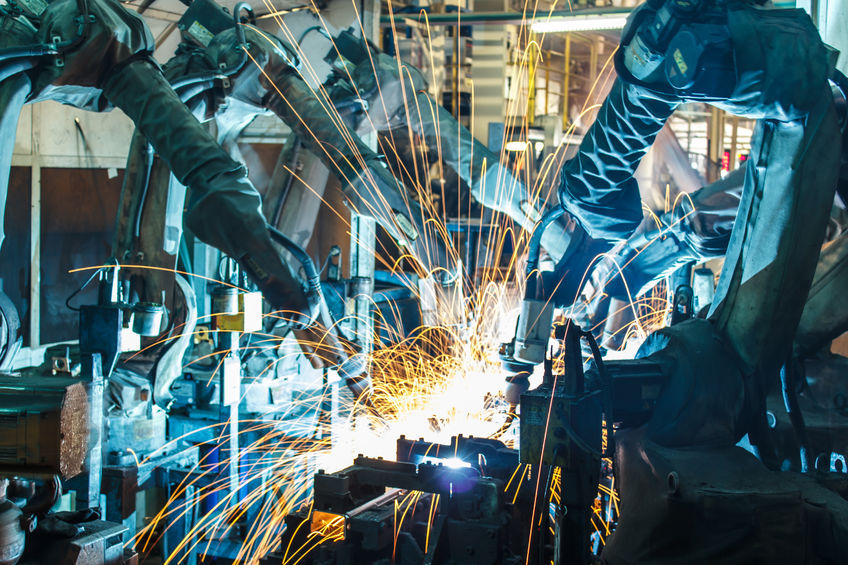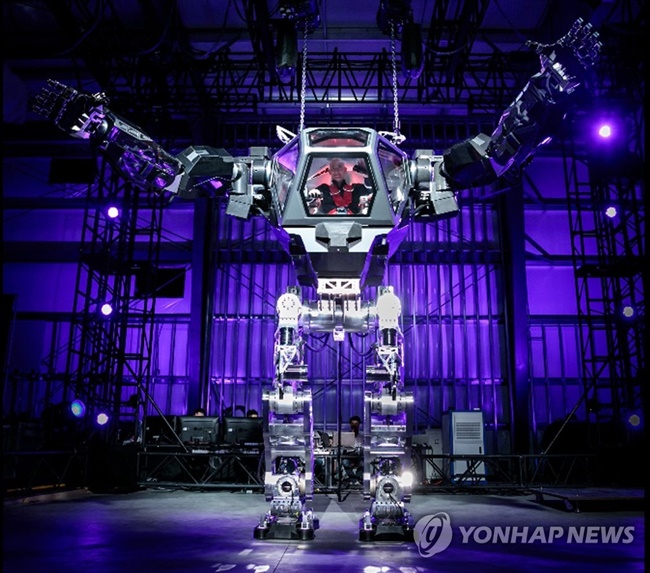
The report on the global robotics industry released by the Bank of Korea on Sunday says South Korea had 531 industrial robots per 10,000 workers as of 2015, becoming the world’s most industrial robot-friendly country, surpassing the likes of Singapore, Japan and Germany. (Image: Yonhap)
SEOUL, Aug. 21 (Korea Bizwire) – Despite boasting the highest number of industrial robots per worker, South Korea is lagging far behind the U.S., Europe and Japan when it comes to technology in robot manufacturing, according to a new report.
The report on the global robotics industry released by the Bank of Korea on Sunday says South Korea had 531 industrial robots per 10,000 workers as of 2015, becoming the world’s most industrial robot-friendly country, surpassing the likes of Singapore, Japan and Germany.
Starting in 2005, the number of industrial robots per worker in South Korea jumped nearly threefold over the next ten years, from 171 to 531, while the average rate of industrial robot reliance was estimated to be 69 per 10,000 workers.
When it came to the automobile industry, South Korean shared the second spot with the U.S., closely following Japan and leaving behind Germany and France.
However, the report also argues despite the high number of industrial robots being used in the country, the advancement of technology in robotics is lagging behind its competitors, especially compared to the U.S.
It’s been understood that between South Korea and the U.S., the technological gap is thought to be 4.2 years, while that between EU, Japan and the U.S. is thought to be only 1.4 years.
When it came to market share in the robot export industry, Japan came out on top, accounting for nearly 40 percent, followed by Germany and the U.S., accounting for 15.4 and 4.7 percent, respectively, as of 2016.
South Korea accounted for 4.3 percent of the market during the same year, while China accounted for 3.7 percent.
Since the recession, the international robot market grew by 18 percent on average each year, while the industrial robot market alone enjoyed an average annual growth of 20 percent.
According to the International Federation of Robotics, the annual growth rate of the robot market is project to stay around 13 percent until 2019 in the wake of growing demand for artificial intelligence-based robots, particularly in developed countries where medical robots are in high demand.

Despite boasting the highest number of industrial robots per worker, South Korea is lagging far behind the U.S., Europe and Japan when it comes to technology in robot manufacturing, according to a new report. (Image: Yonhap)
While some reports suggest around 0.8 to 1.4 points of the GDP growth will be attributed to improved productivity thanks to automation over in some 20 countries over the next 50 years, others argue it could have a devastating impact on the job market without measures to protect job opportunities.
“New job opportunities must be made in robot-related industries to cushion the possible damage and protect balanced income distribution,” said Lee Jae-won, a chief official at the Bank of Korea.
M.H.Lee (mhlee@koreabizwire.com)






